Morse Code – Through the Years
There are several types of Morse keys and FOC operators are adept at using one or more of them.
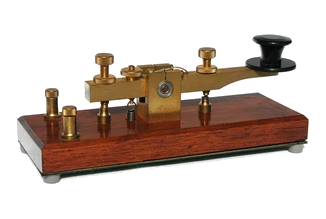
Straight Key
In the first days of telegraphy in the 1840s, a straight up and down switch (or key) was used. At that time Morse code was used by the railway systems of the world for communication along wires and for internal government and public communication. It was the only mode available for the fledgling wireless or radio systems of the early twentieth century.
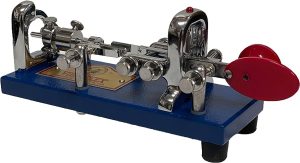
Bug
Around the turn of the 20th Century as Morse sending speeds increased, railway Morse operators wanted a faster sending key and the sending of dots was automated by clever engineers using a vibrating steel mechanical arm. They were called ‘bugs’ or more correctly semi-automatic keys. There are a number of FOC operators who keep these old skills alive such as HB9QO (1408), G4AFU (FOC 1546), DL4CF (FOC 1582), WB6BEE (FOC 2041), K5KV (FOC 2043), W4EDE (FOC 2023) and G3VTT (FOC 1342)
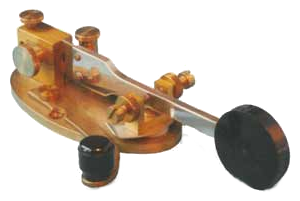
Side Swiper
The ‘Side Swiper’ is a speed key without electronics. It is a rare device but one of our past members, G0ADE, was a skilled exponent of the device once popular with marine and airborne operators.
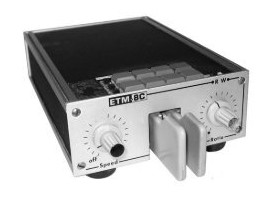
Electronic Keyers
In the late 1950s a new type of key was developed using electronics to produce dots and dashes in the correct 1:3 ratio when a paddle is connected to it. OZ7BO, (FOC 27), was probably the first person to design one. In his day he had to use triode valves (tubes) but modern electronic keyers use transistors and integrated circuits. In the 1960s G3JRE designed the first iambic circuit using early integrated circuits. Dale G3VMK (FOC 1332) used a microprocesser and memory chips to provide a capability for storing short messages. This 1970s innovation forms the basis of most electronic keyers nowadays. Ian G3RVM (FOC 1407) produced a design with new CMOS chips in the 1970s and a revised design a few years later with auto-character spacing and then Herman DJ2BW (FOC 1392) designed and built the ETM series which became popular in the 1980s, shown here. Bob W9KNI (FOC 1262) has marketed the Logikey from the 1990s, see Idiom Press.
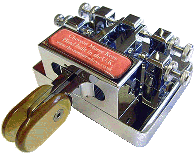
Paddles, now also called keys
These are the mechanical interface between the sender and an electronic keyer, touched by the sender’s thumb and fore-finger (normally dots on the thumb, dashes on the finger). There are a couple of different types: Single lever Double lever. Other variations exist; returning the levers to their normal position after being pressed by using springs (compressing or expanding) or magnets (repelling or attracting.) The N2DAN Mercury became popular amongst members as well as the Bencher produced by W9KNI’s company, Bencher. Ex FOC member M0AGA, produces what is arguably the best paddle in the world, the Chevron, shown here.

Keyboard
As this infers, sending is made by using a keyboard. These can be special standalone “boxes” which take keyboard input and produce morse directly (they are self-contained and do only this function). Also, of course, these days computers can be used to generate morse while also running other programs. Several members are proficient keyboarders reaching speeds of 60wpm or more.

